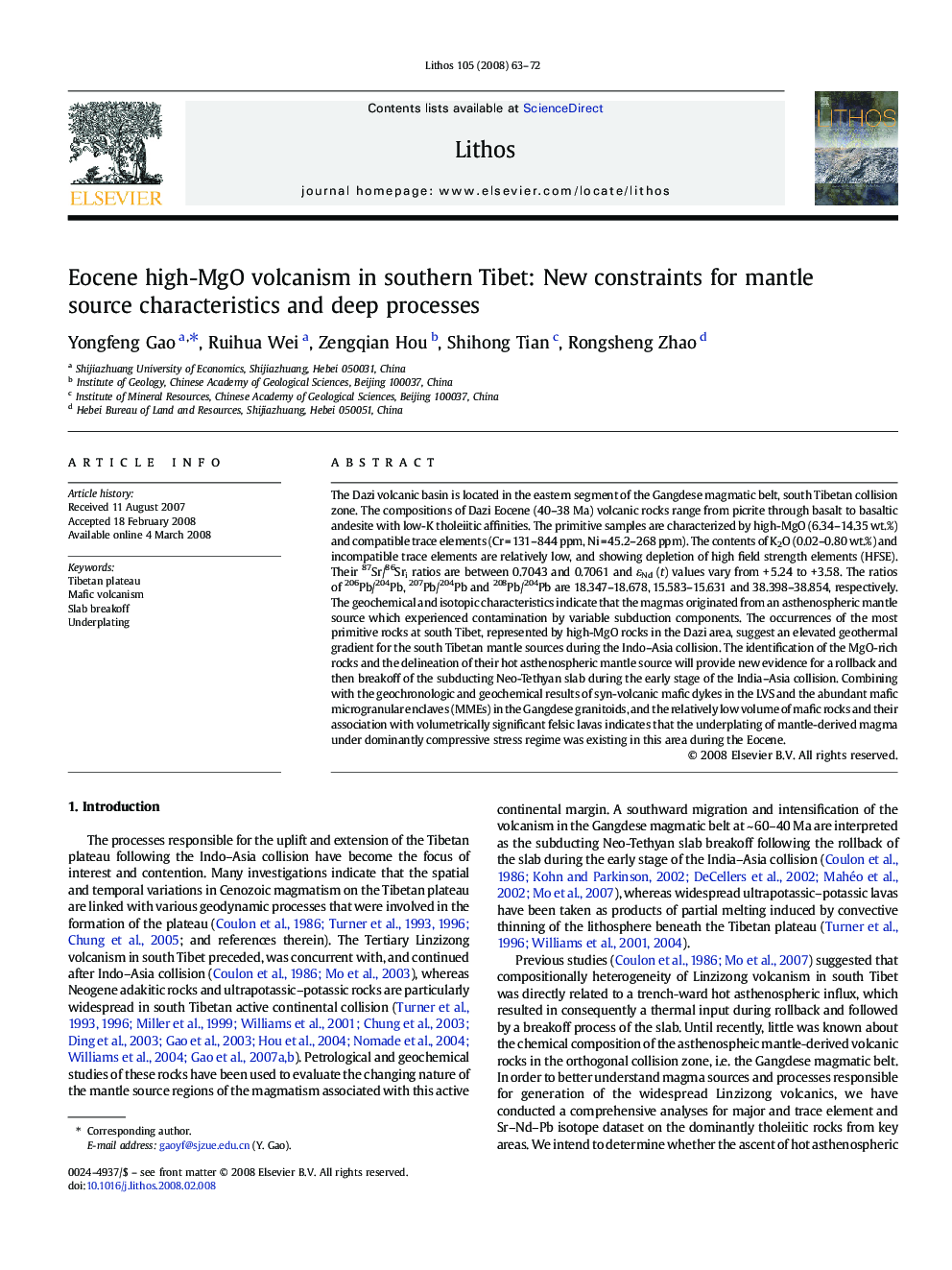| Article ID | Journal | Published Year | Pages | File Type |
|---|---|---|---|---|
| 4717389 | Lithos | 2008 | 10 Pages |
The Dazi volcanic basin is located in the eastern segment of the Gangdese magmatic belt, south Tibetan collision zone. The compositions of Dazi Eocene (40–38 Ma) volcanic rocks range from picrite through basalt to basaltic andesite with low-K tholeiitic affinities. The primitive samples are characterized by high-MgO (6.34–14.35 wt.%) and compatible trace elements (Cr = 131–844 ppm, Ni = 45.2–268 ppm). The contents of K2O (0.02–0.80 wt.%) and incompatible trace elements are relatively low, and showing depletion of high field strength elements (HFSE). Their 87Sr/86Sri ratios are between 0.7043 and 0.7061 and εNd (t) values vary from + 5.24 to + 3.58. The ratios of 206Pb/204Pb, 207Pb/204Pb and 208Pb/204Pb are 18.347–18.678, 15.583–15.631 and 38.398–38.854, respectively. The geochemical and isotopic characteristics indicate that the magmas originated from an asthenospheric mantle source which experienced contamination by variable subduction components. The occurrences of the most primitive rocks at south Tibet, represented by high-MgO rocks in the Dazi area, suggest an elevated geothermal gradient for the south Tibetan mantle sources during the Indo–Asia collision. The identification of the MgO-rich rocks and the delineation of their hot asthenospheric mantle source will provide new evidence for a rollback and then breakoff of the subducting Neo-Tethyan slab during the early stage of the India–Asia collision. Combining with the geochronologic and geochemical results of syn-volcanic mafic dykes in the LVS and the abundant mafic microgranular enclaves (MMEs) in the Gangdese granitoids, and the relatively low volume of mafic rocks and their association with volumetrically significant felsic lavas indicates that the underplating of mantle-derived magma under dominantly compressive stress regime was existing in this area during the Eocene.
